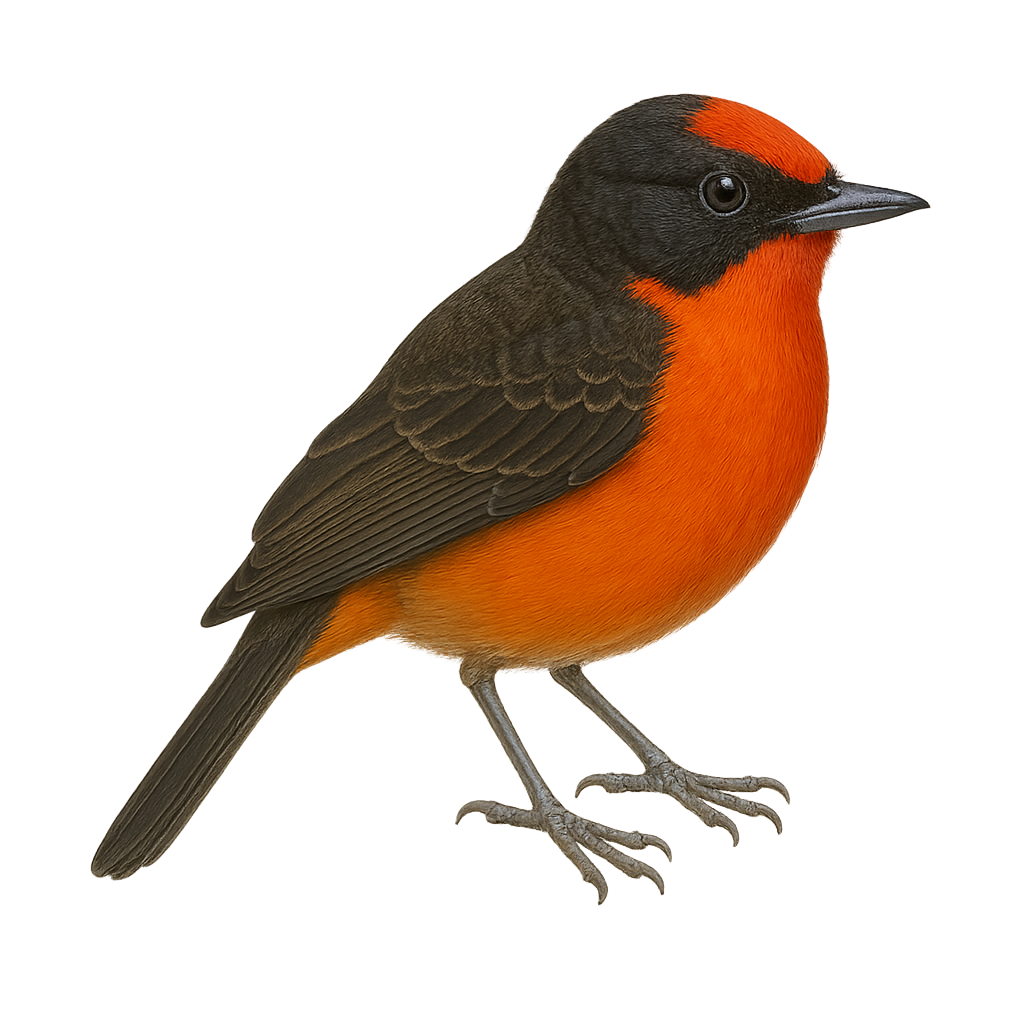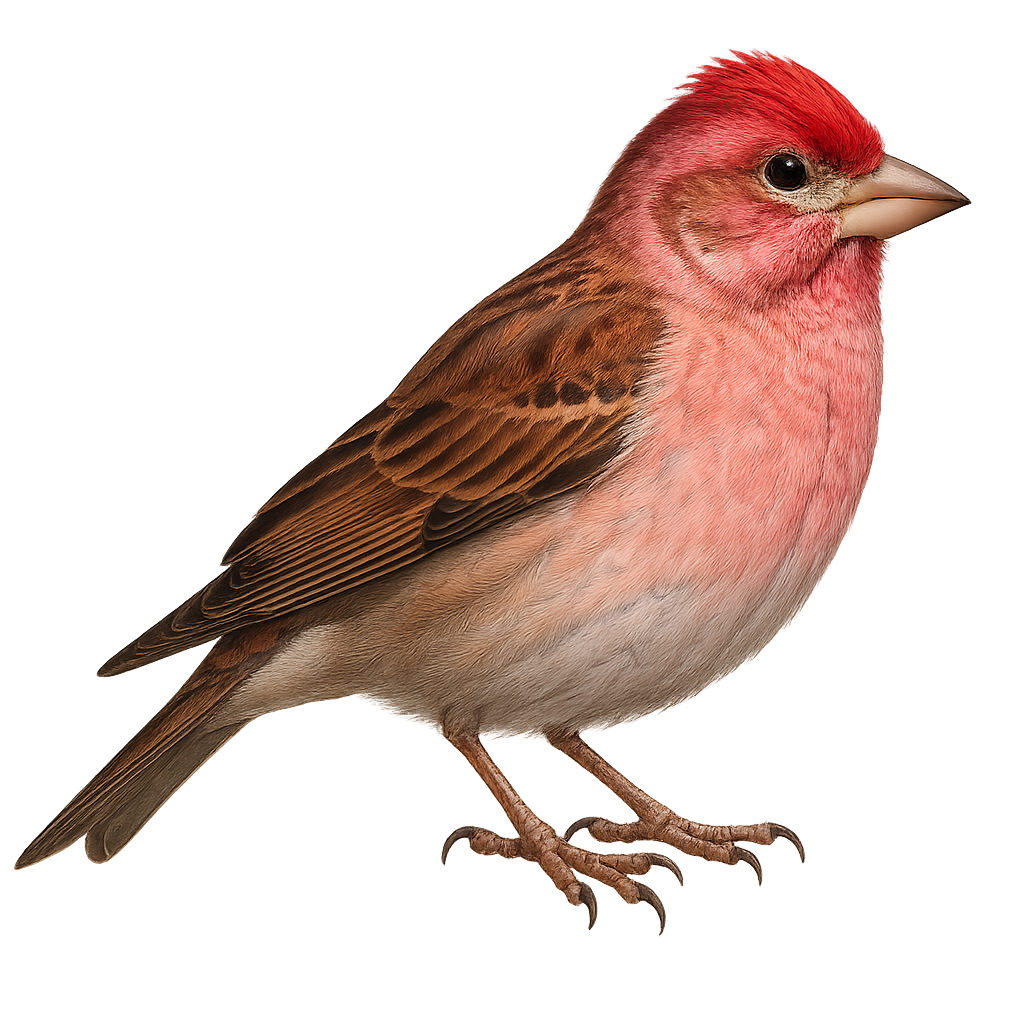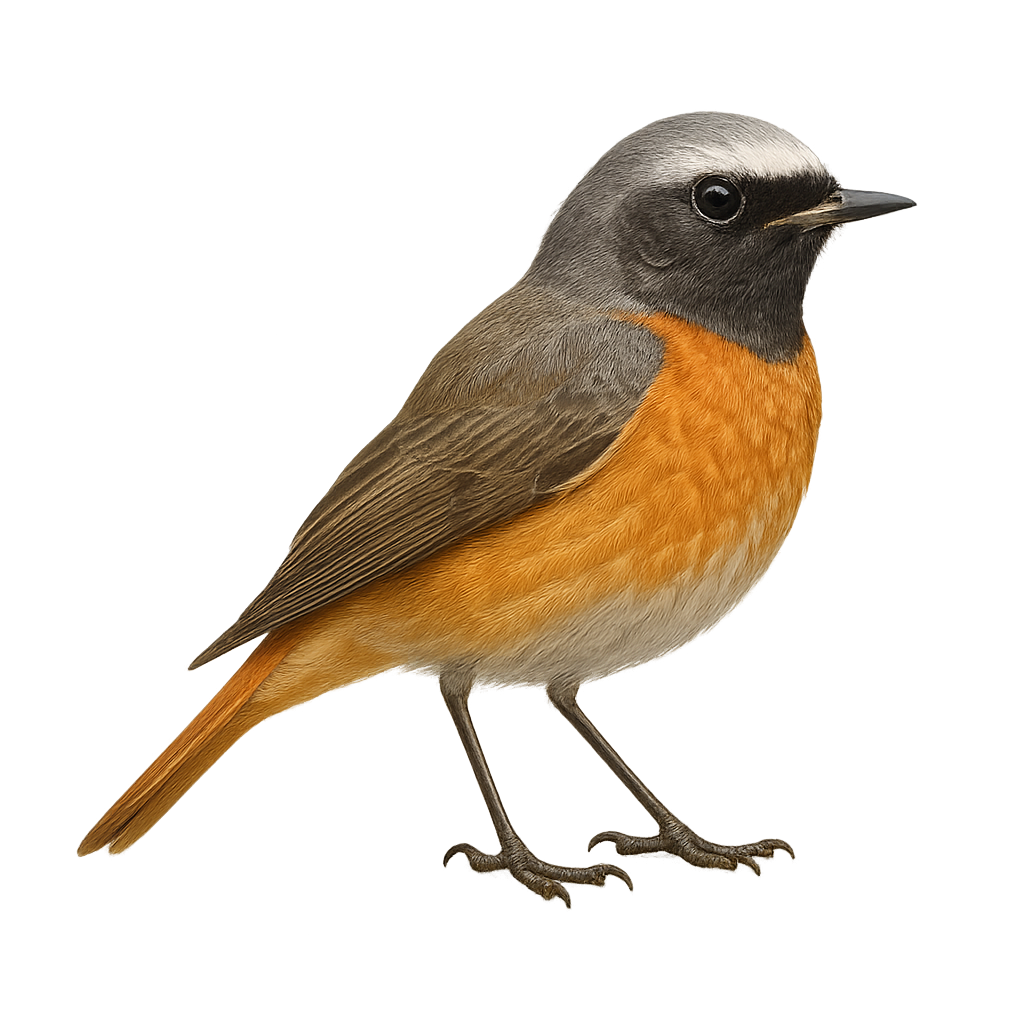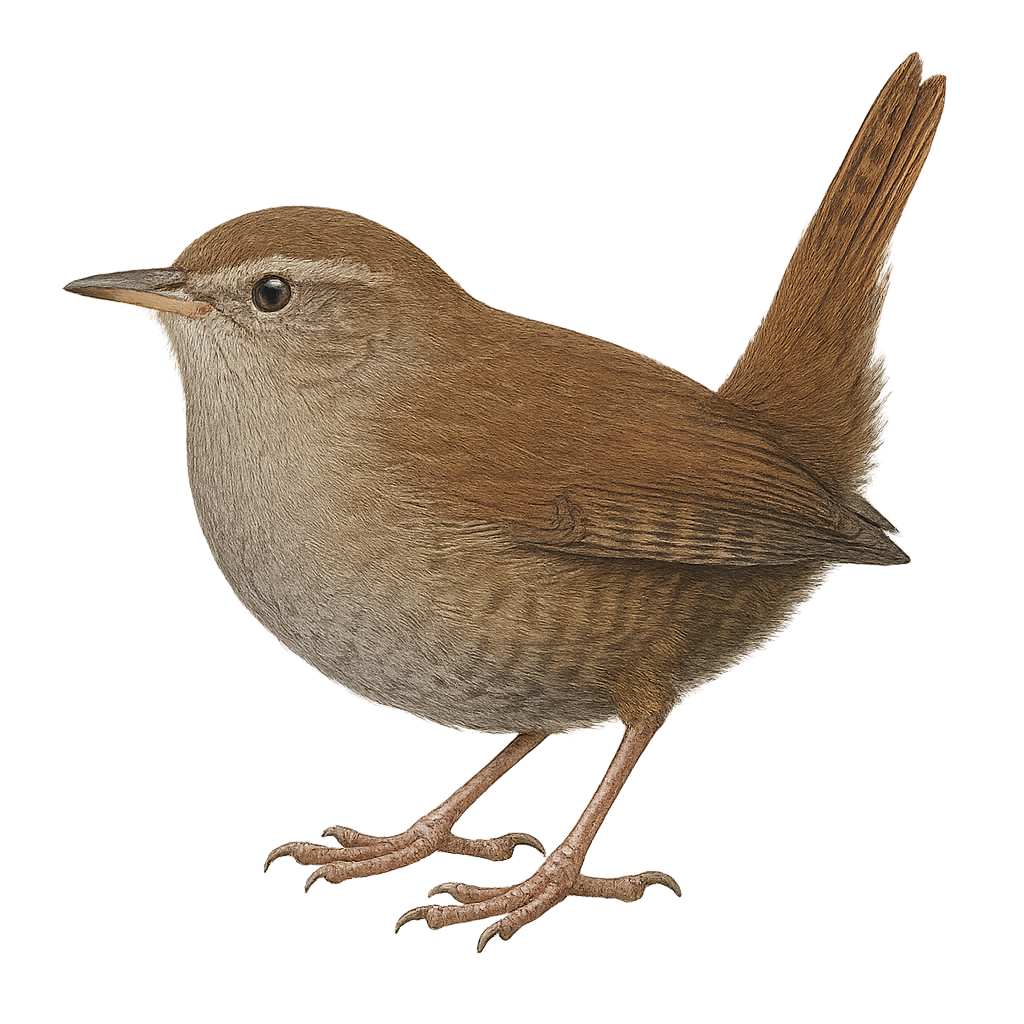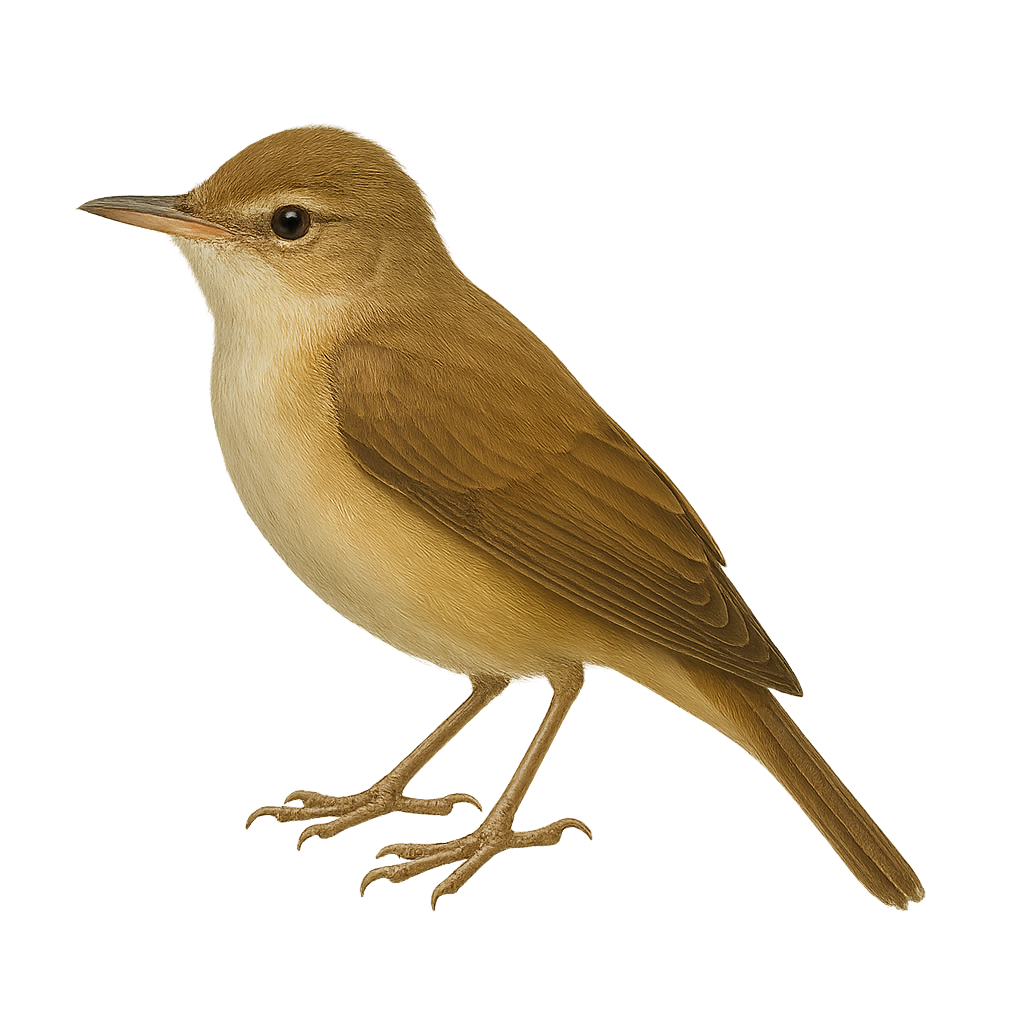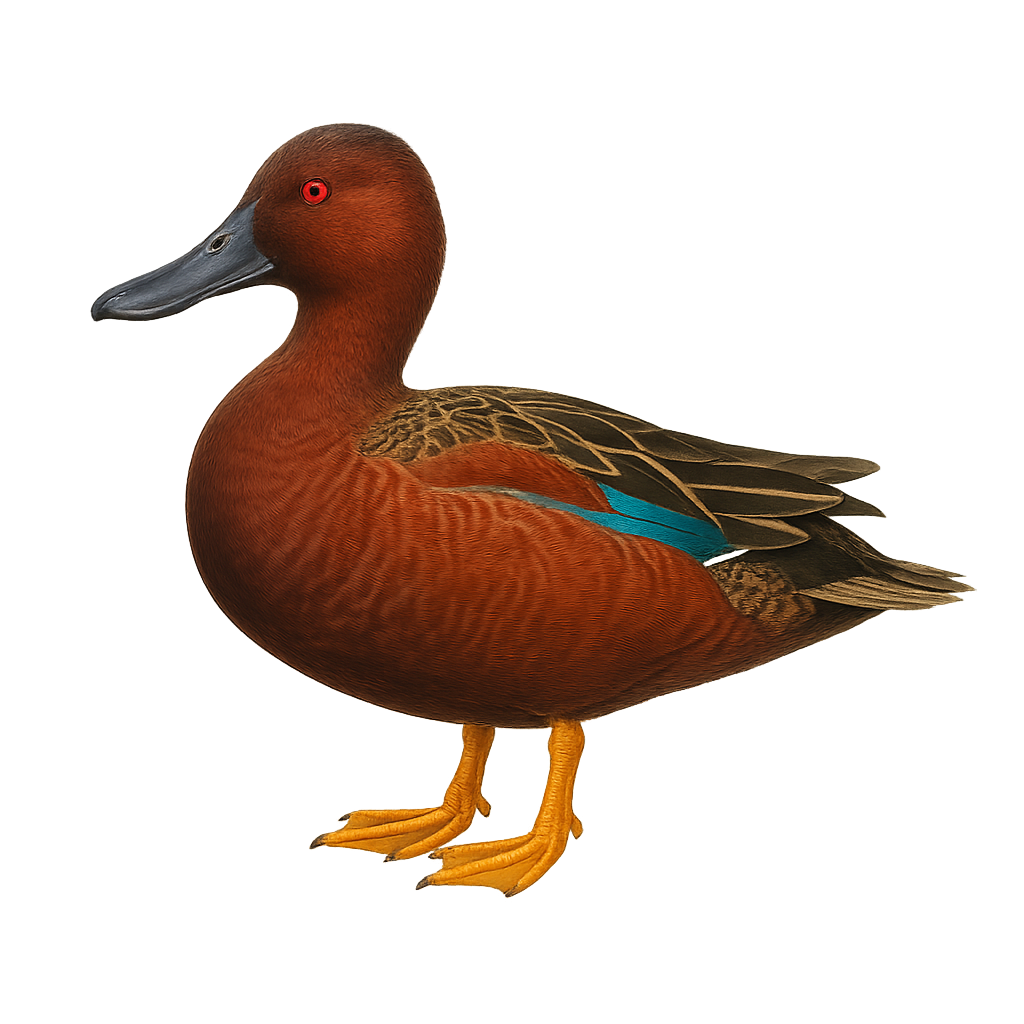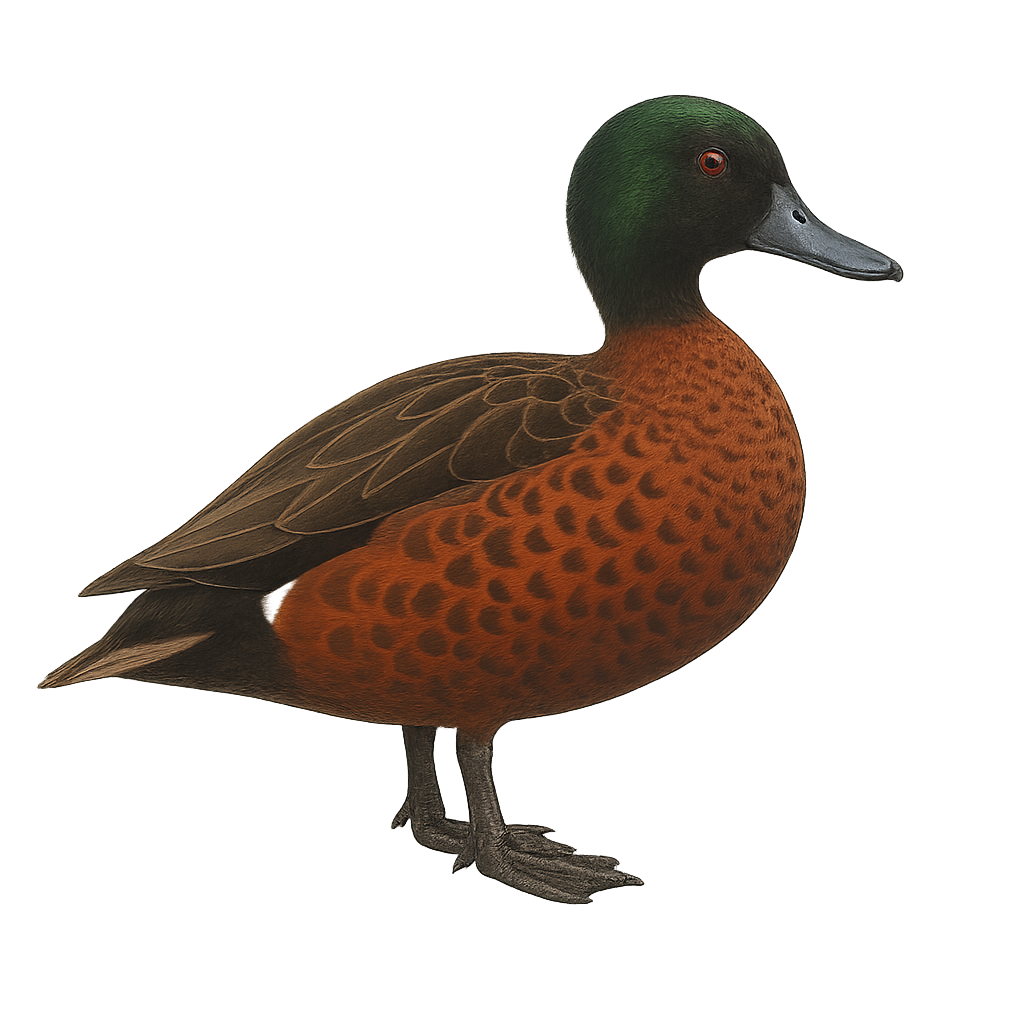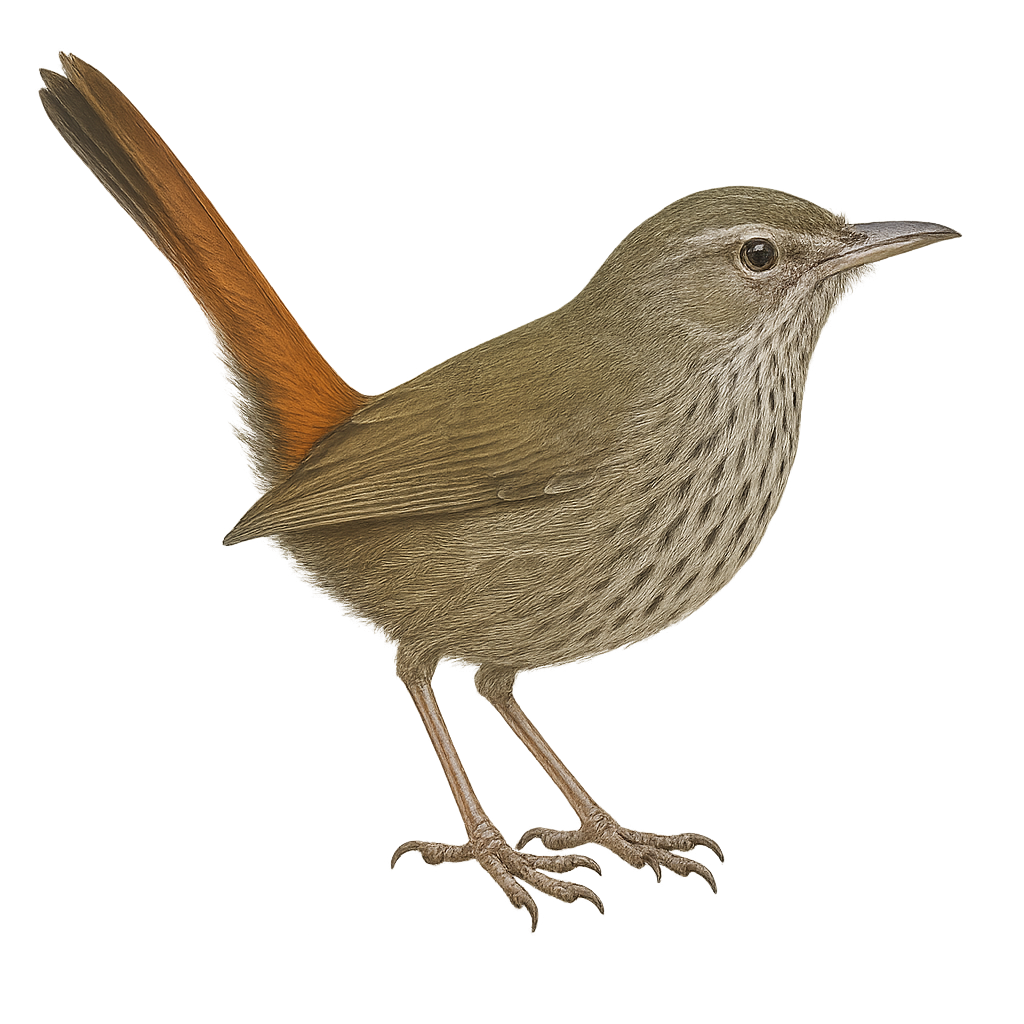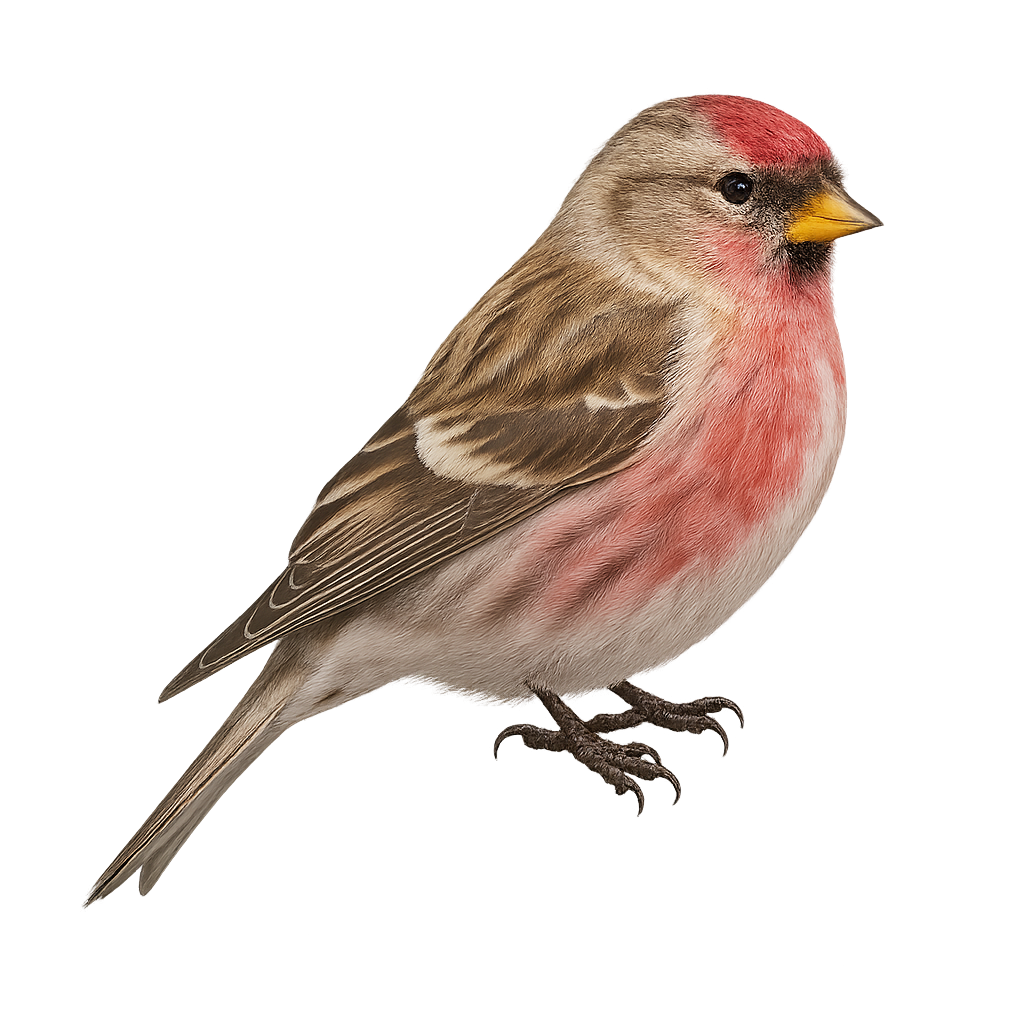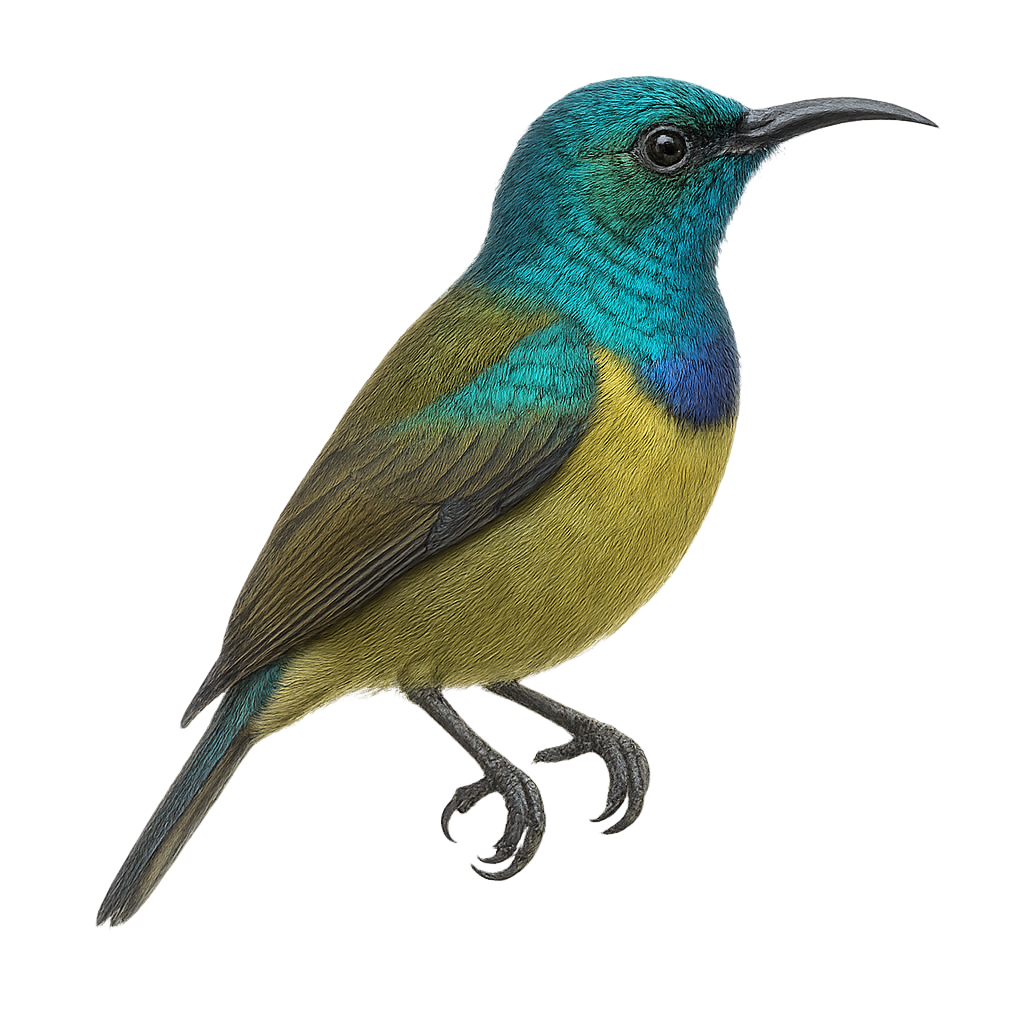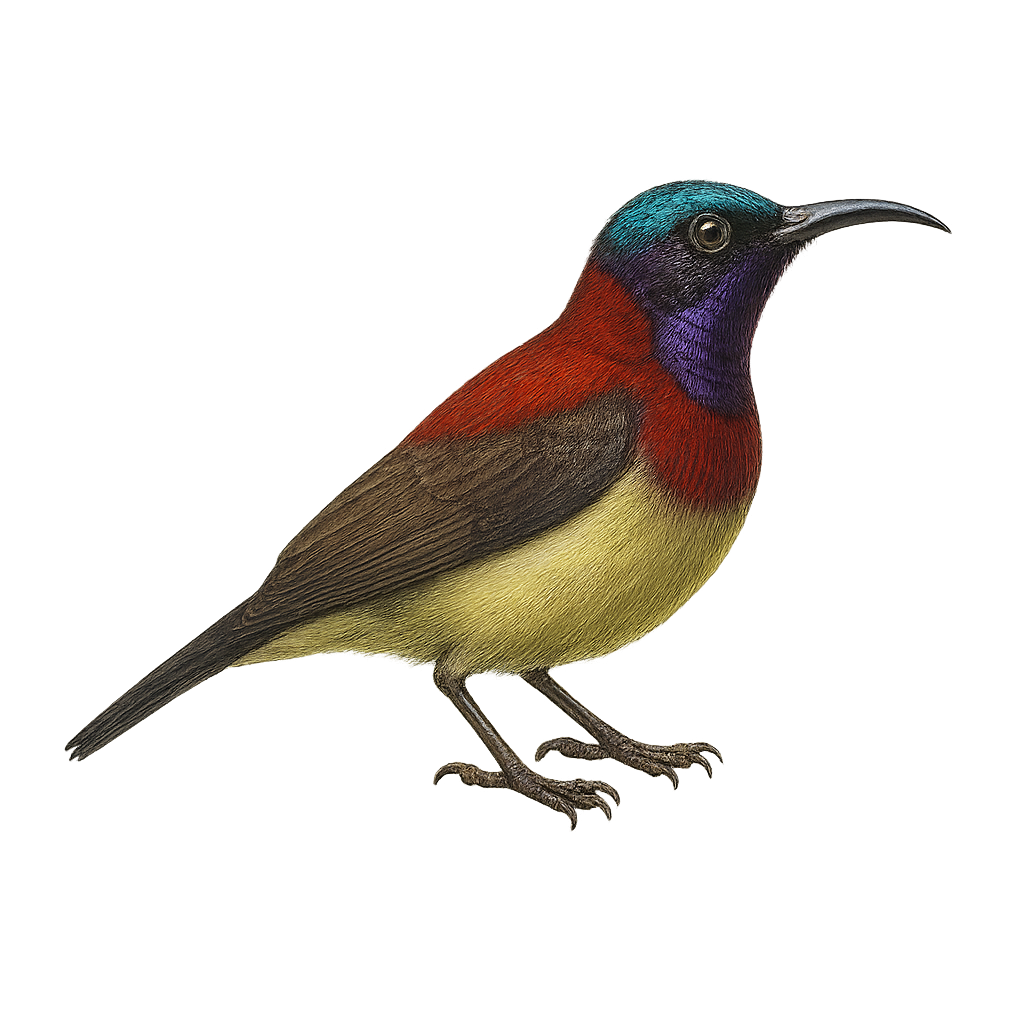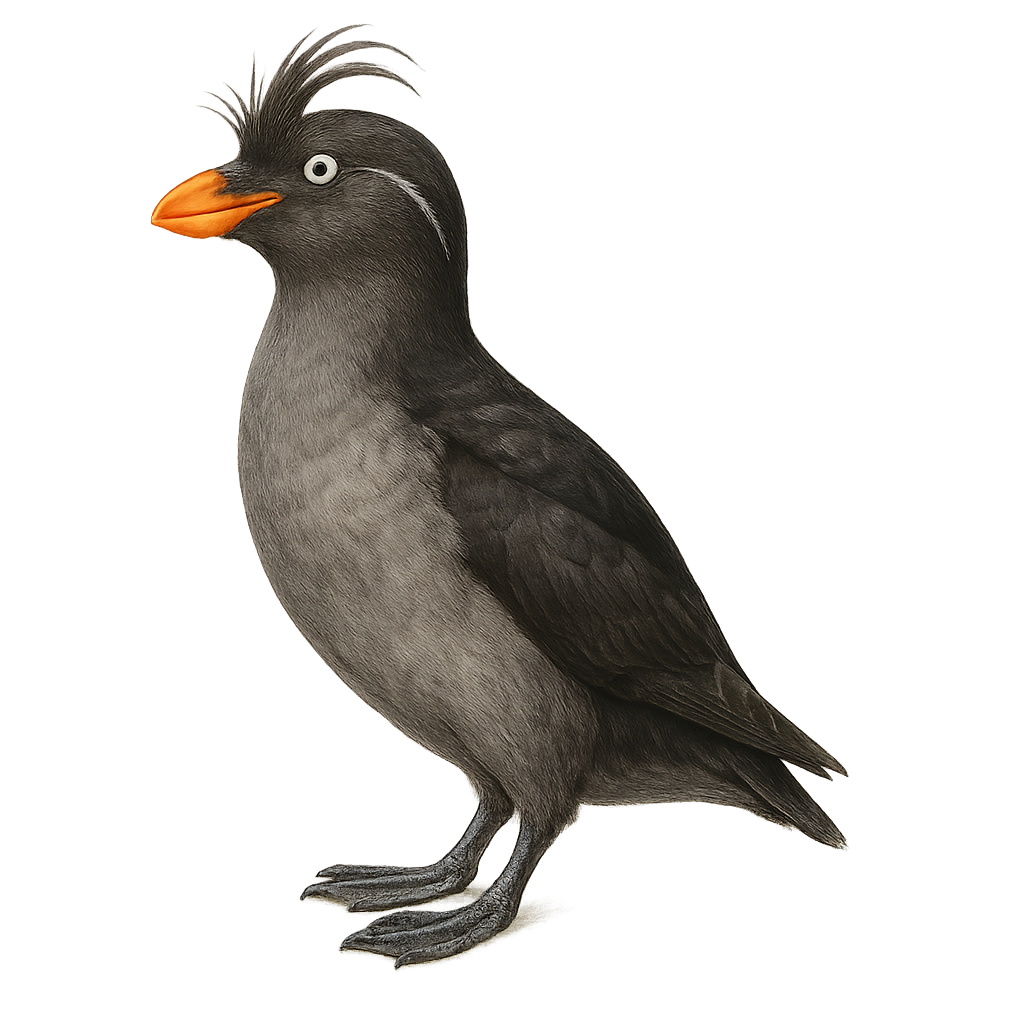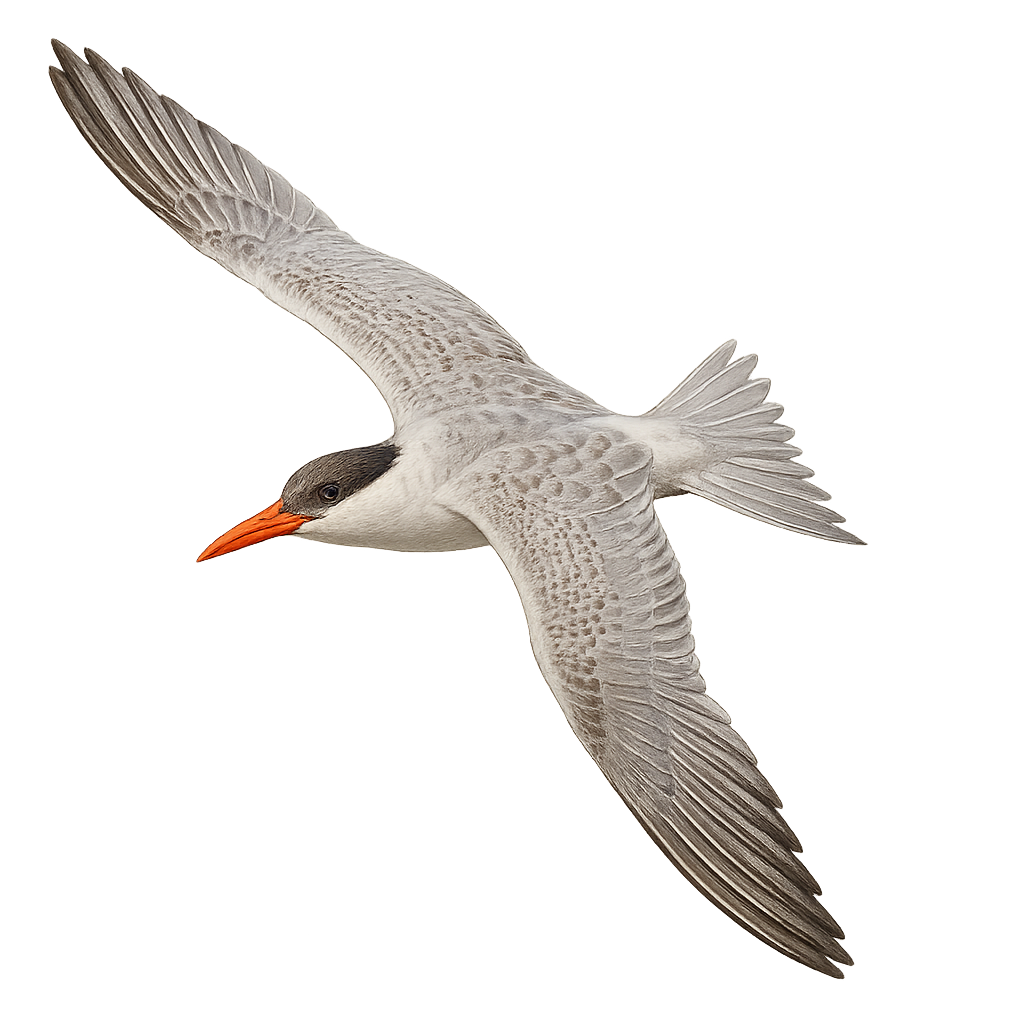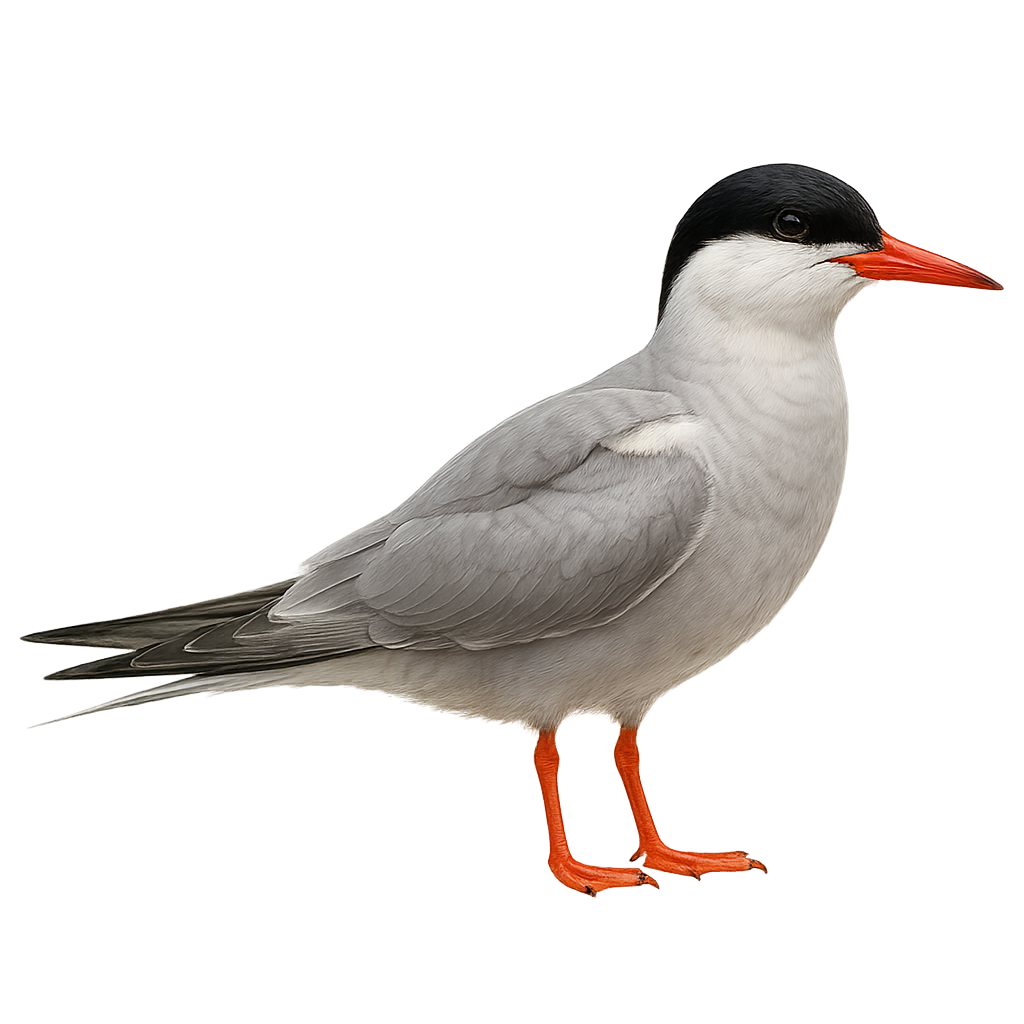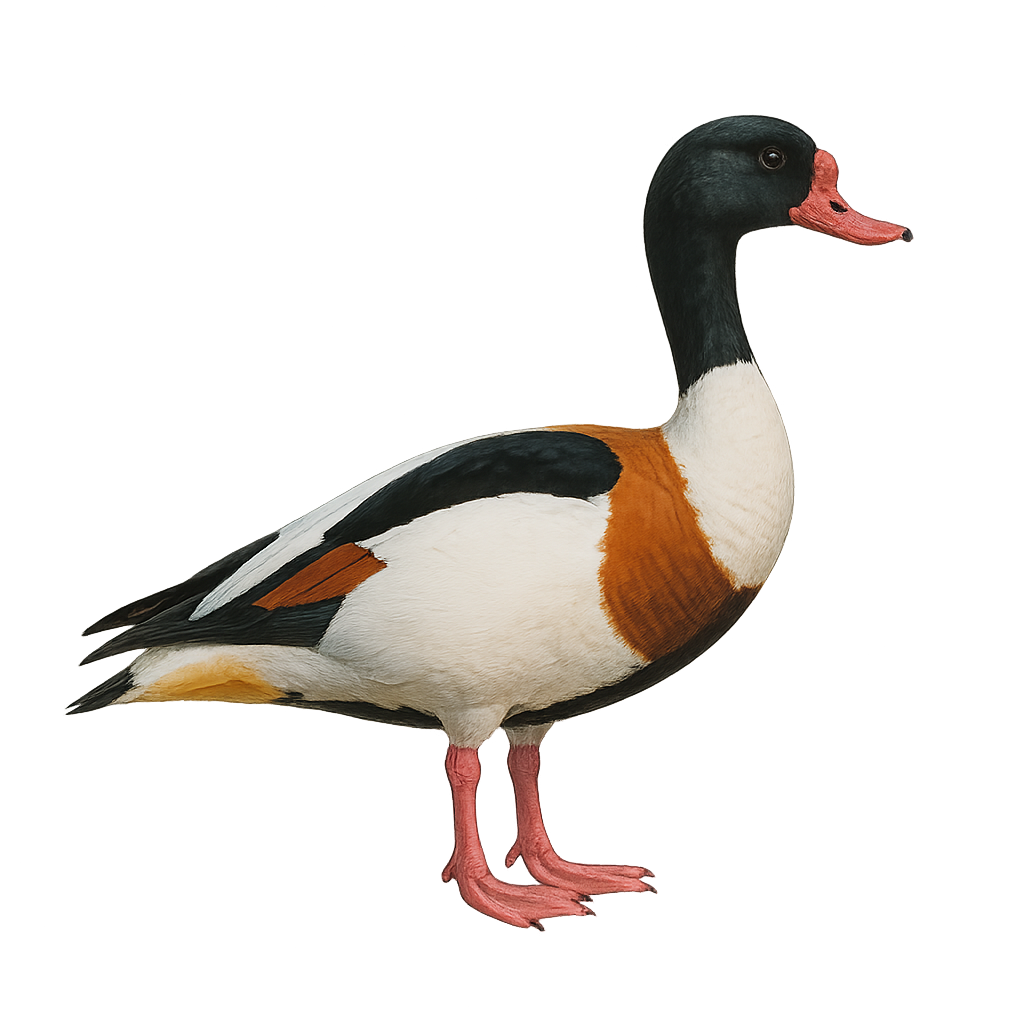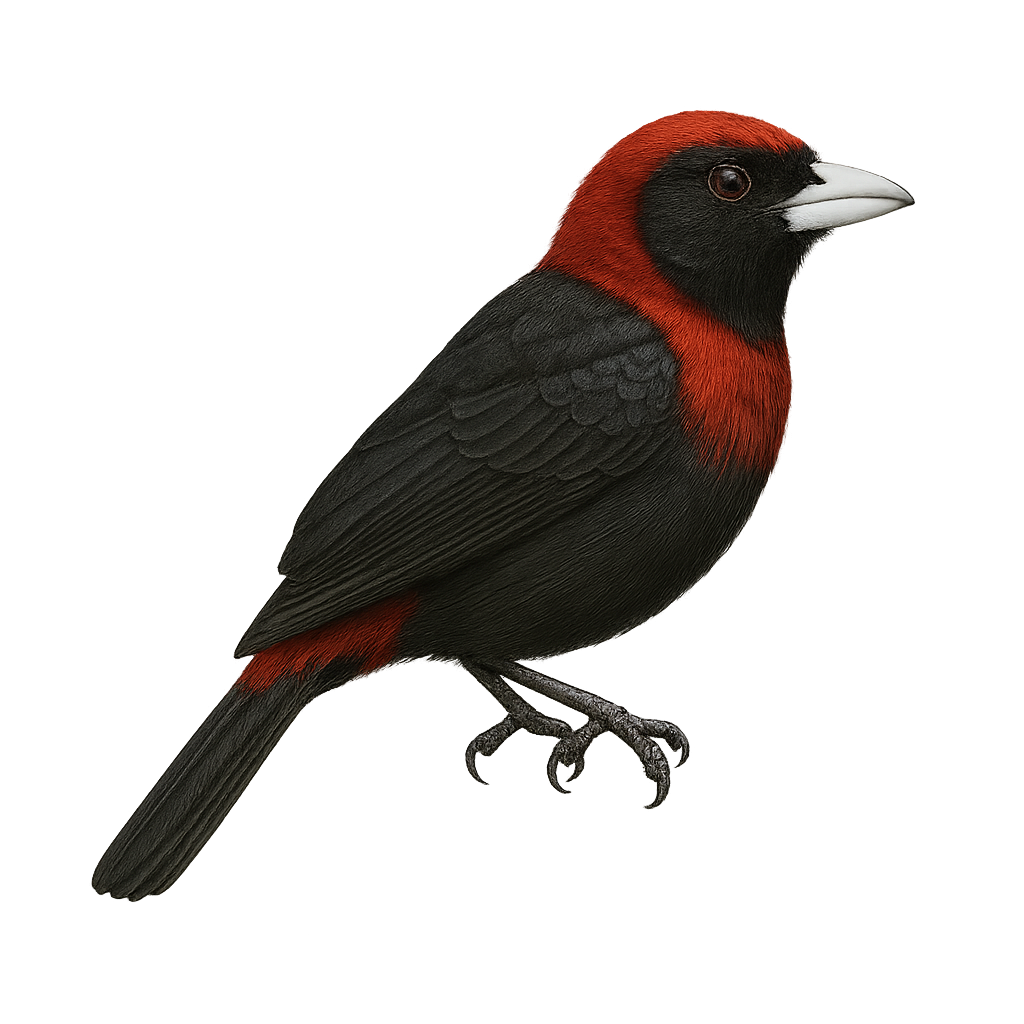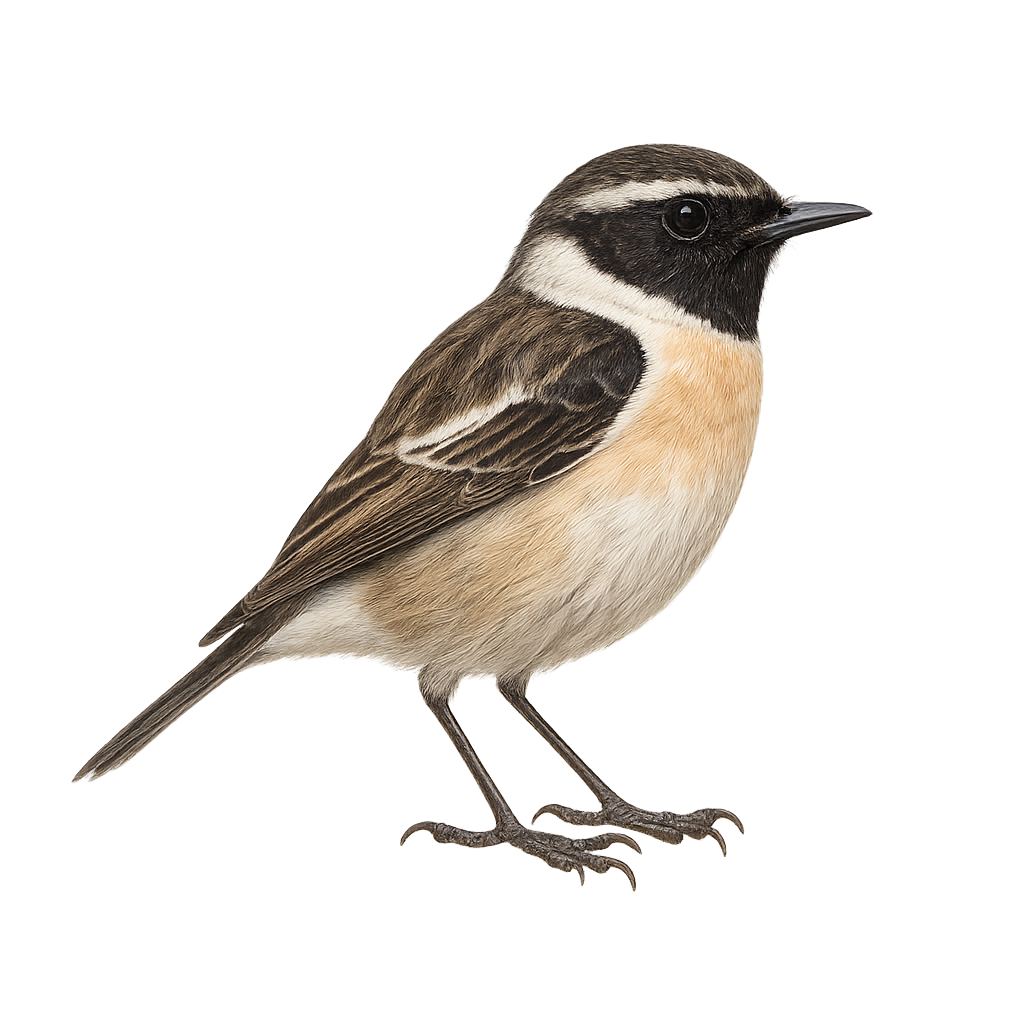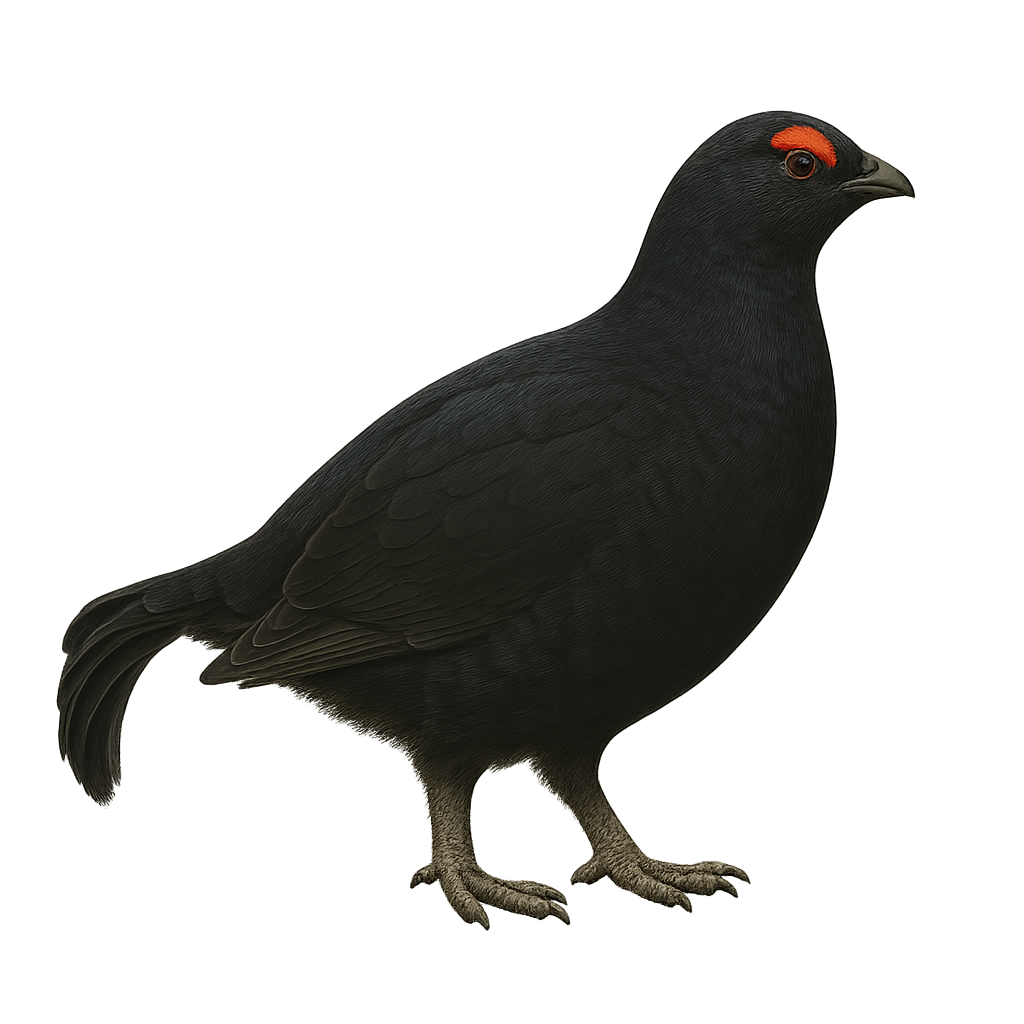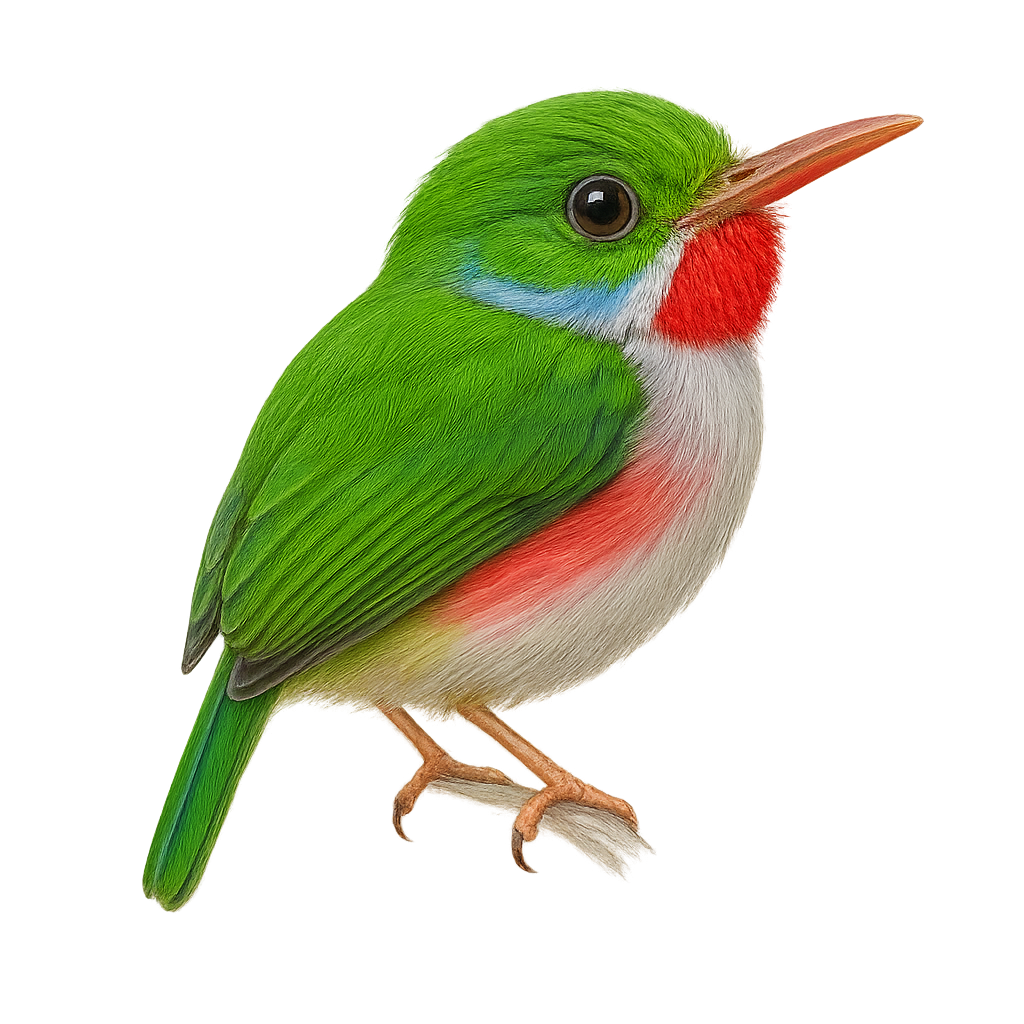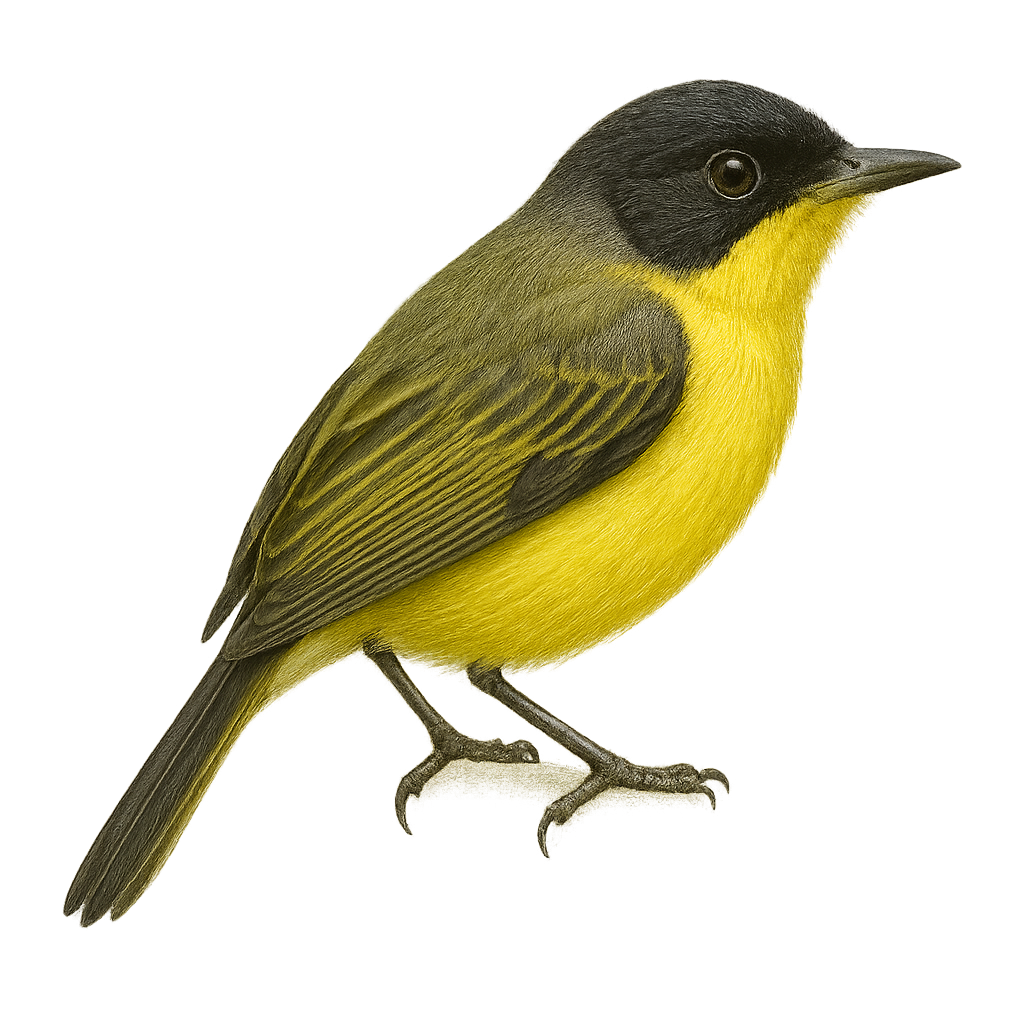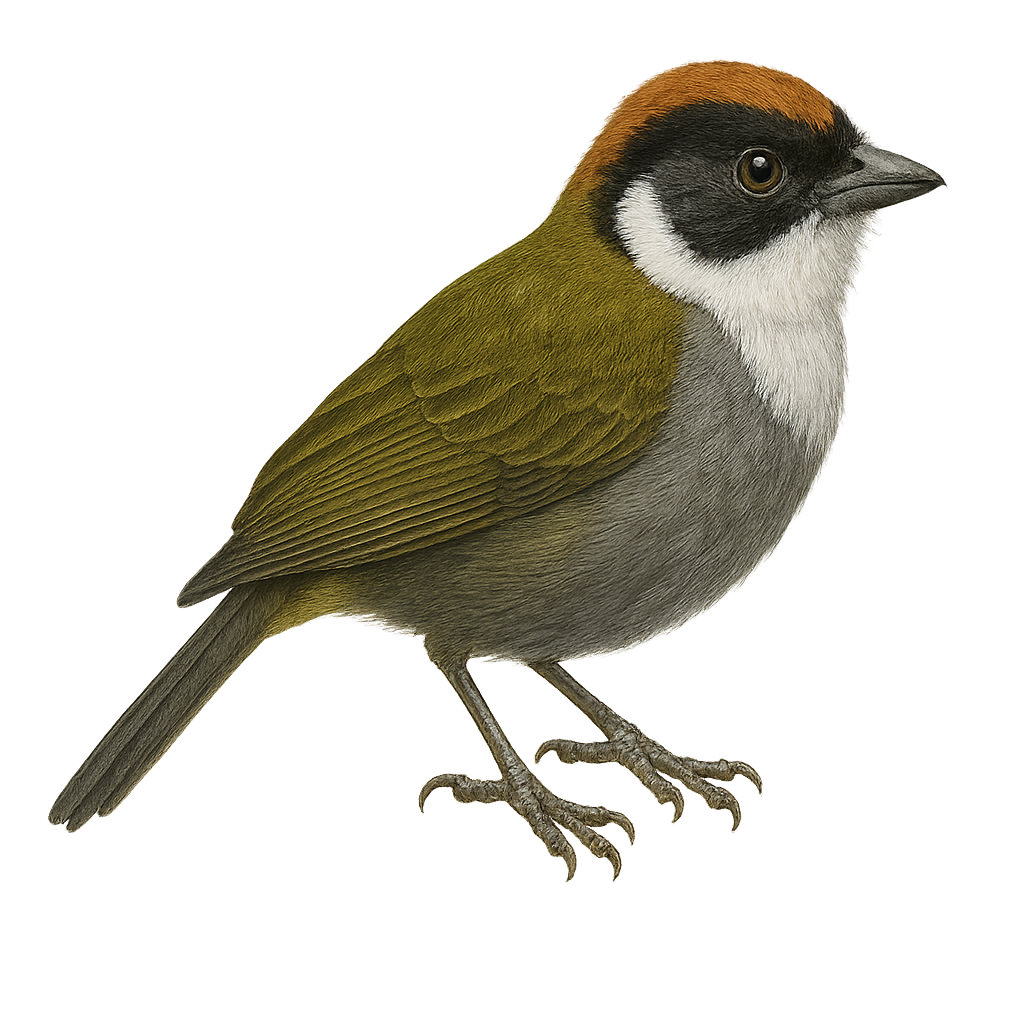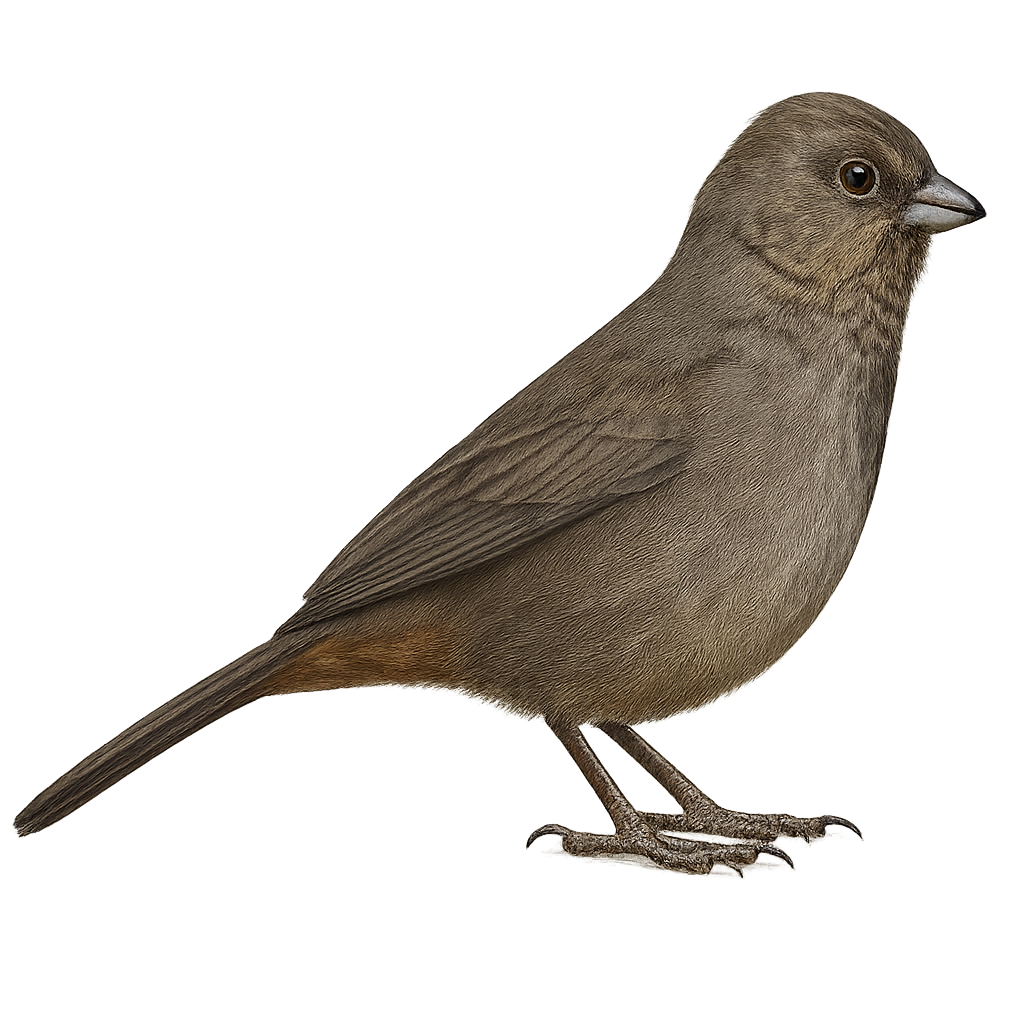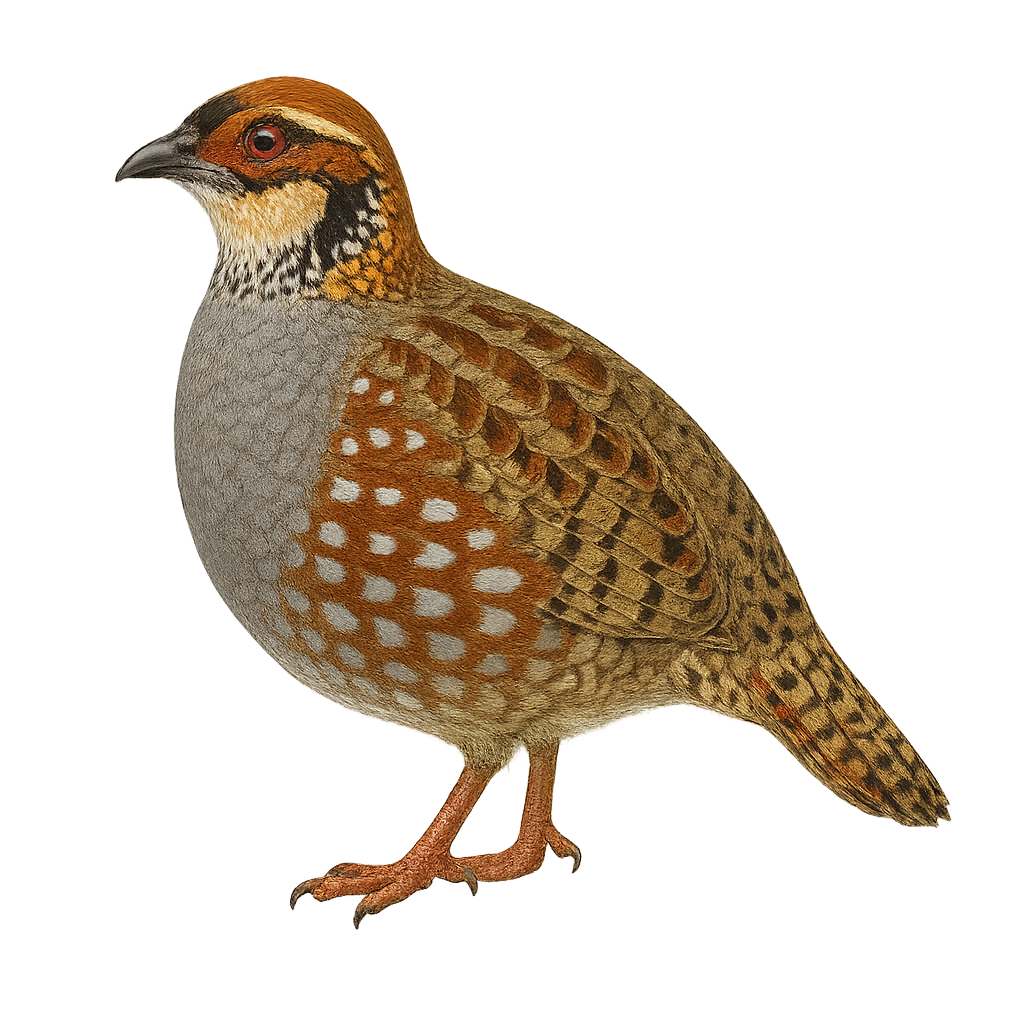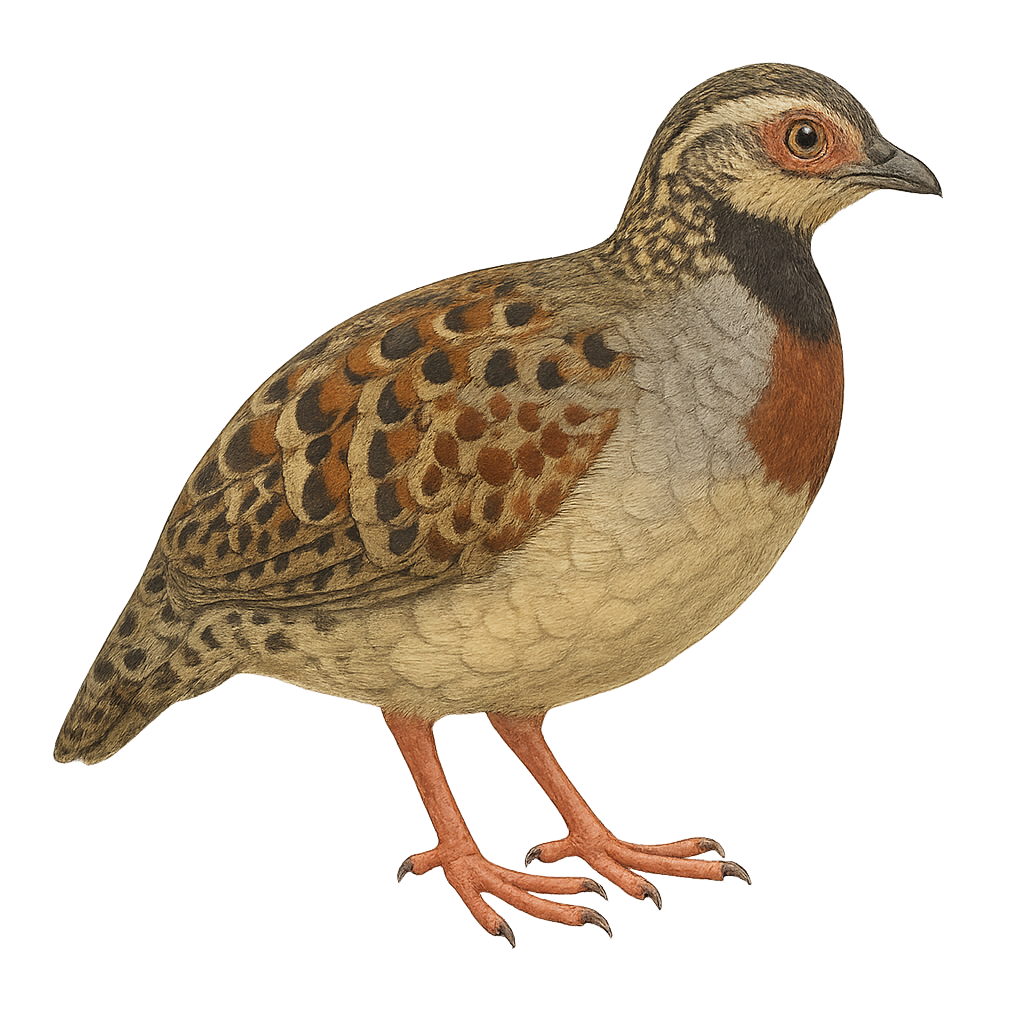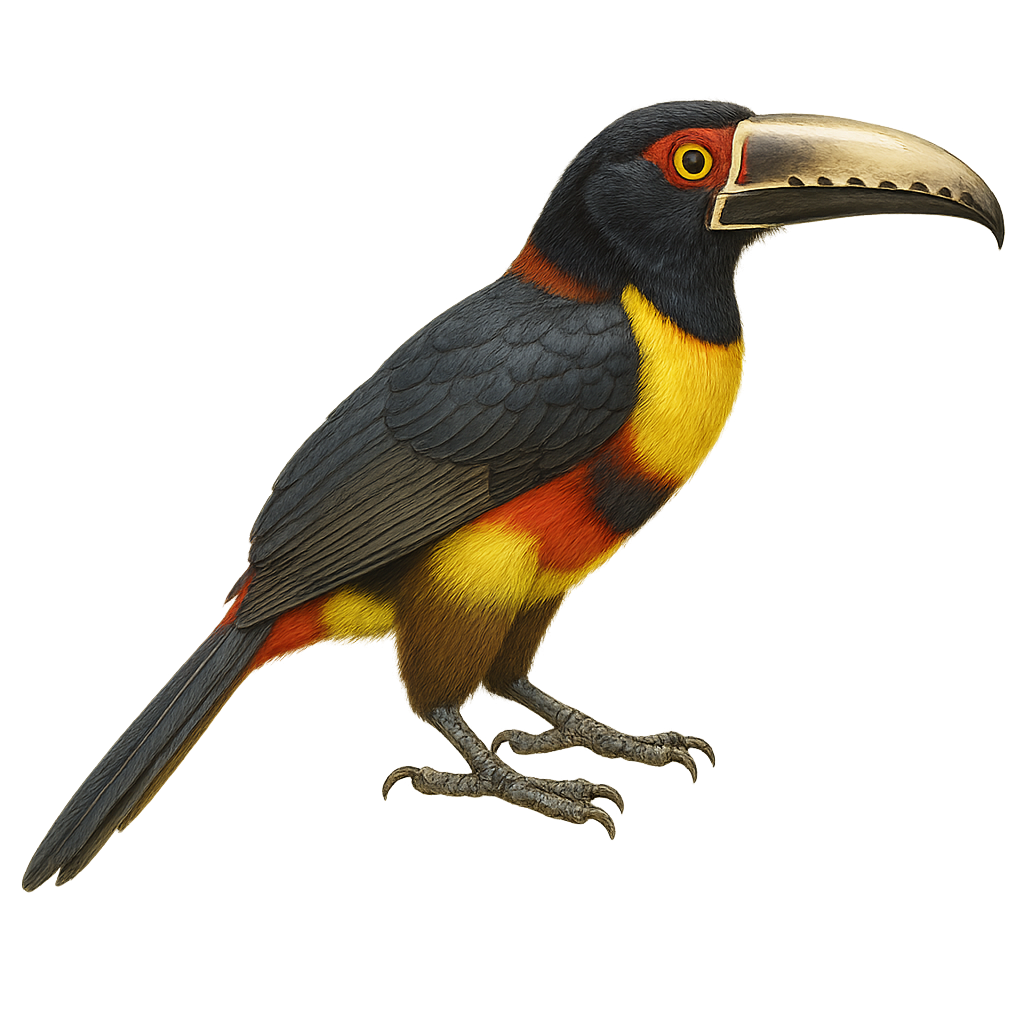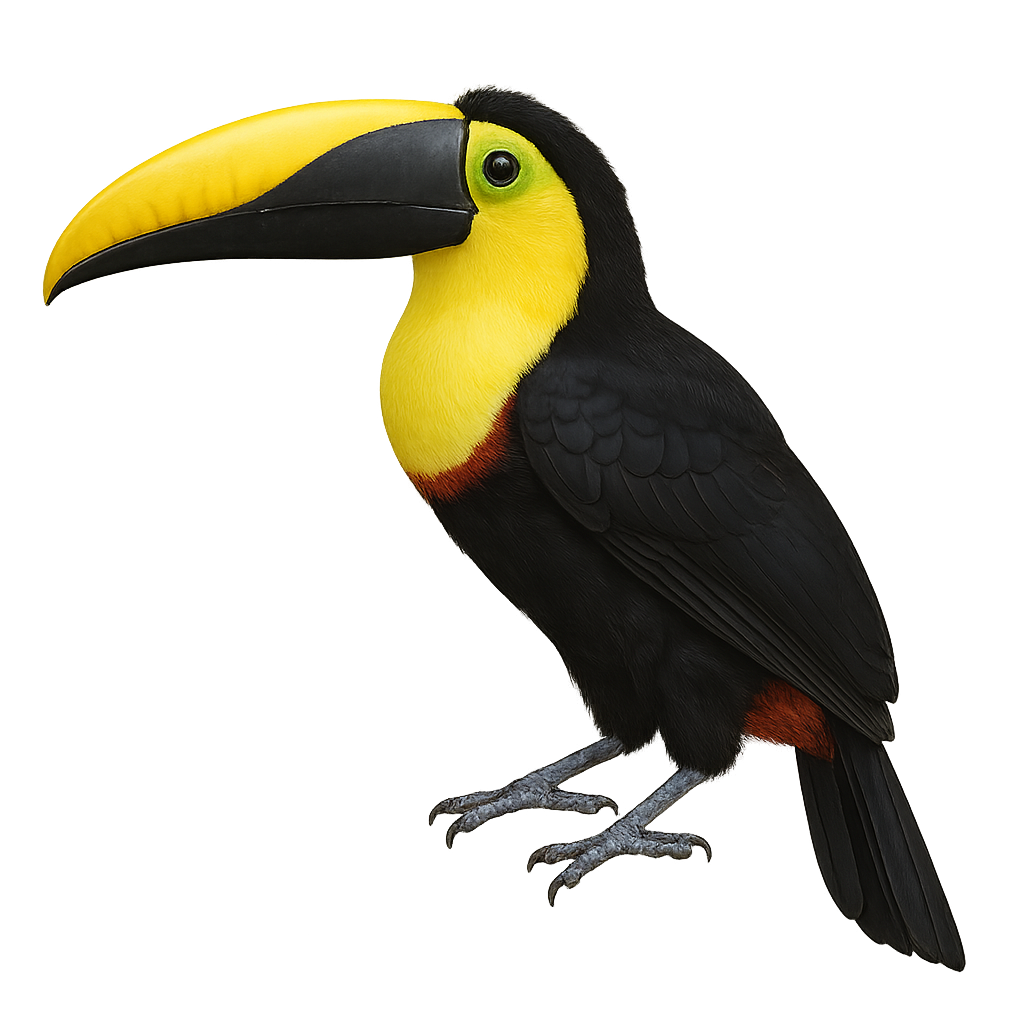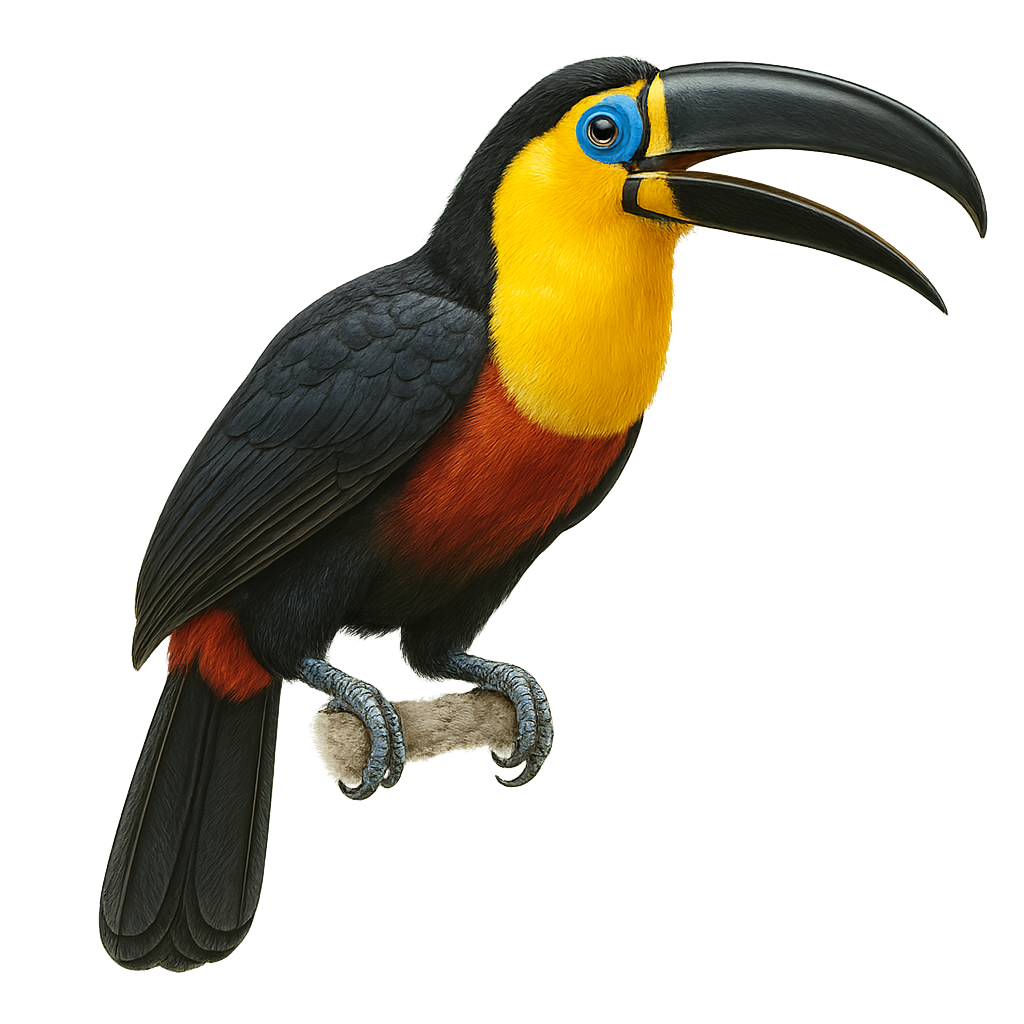The Crimson Finch, or Rhodospingus cruentus, is a bird from the Thraupidae family, known for its striking plumage. Males display a vivid red color on their head and body, contrasting with black wings and tail, while females have duller, often brownish tones. This bird measures about 13 cm in length and weighs between 15 and 20 grams. It is mainly found in tropical and subtropical moist forests, as well as dense shrub areas. The Crimson Finch is a sociable bird, often seen in small groups. Its diet consists mainly of fruits, seeds, and insects. Although its conservation status is currently "least concern", deforestation poses a threat to its natural habitat.
The Common Rosefinch, Carpodacus erythrinus, is a small passerine bird known for its striking plumage. Males display a bright red color on the head, chest, and rump, contrasting with the brown wings and back. Females are more subdued, with brownish tones and streaks on the belly. This bird measures about 13 to 15 cm in length with a wingspan of 22 to 26 cm. It is primarily found in deciduous forests, shrublands, and wet meadows across Europe and Asia. A migratory species, it winters in India and Southeast Asia. Its melodious and varied song is often heard in spring and summer, the breeding season.
The Cassin's Finch is a medium-sized songbird belonging to the Fringillidae family. It is primarily found in the coniferous forests of western North America, especially in the Rocky Mountains. Males display a rosy hue on their head, chest, and rump, while females and juveniles are duller with brownish patterns. This finch primarily feeds on seeds, buds, and small fruits. It is often seen in small flocks, especially outside the breeding season. Its melodious and varied song is a distinctive feature of its behavior, used to attract mates and mark territory.
The common redstart is a small passerine of 12–14 cm with bluish-grey upperparts and bright orange underparts, featuring a white forehead and black facial mask. It inhabits mixed woodlands, edges, parks and gardens, feeding mainly on insects caught on the wing and on the ground. During breeding, males sing from low perches to attract females and defend territories.
Cetti's warbler is a small passerine, 11–13 cm long, with dull brown-olive plumage and pink legs. Secretive species of riverside scrub and reedbeds, feeding mainly on insects and spiders. During breeding the male sings loudly from an exposed perch to mark its territory.
The common reed warbler is a medium-sized warbler, about 13 cm long, with plain brown upperparts and buff underparts. It is secretive in reedbeds, feeding chiefly on insects and spiders gleaned from stems. During breeding, the male sings from a low perch to defend its territory and court the female.
The Cinnamon Teal, or Spatula cyanoptera, is a small dabbling duck found primarily in North and South America. It is recognizable by its reddish-brown plumage in males, while females display more subdued shades of brown and gray. This species prefers wetland areas such as marshes and ponds where it feeds mainly on aquatic plants, seeds, and insects. The Cinnamon Teal is a migratory species, moving south during the winter months. It is often seen in small groups and is known for its fast and direct flight.
The Chestnut Teal, Anas castanea, is a dabbling duck species native to Australia. This duck exhibits marked sexual dimorphism: the male has a metallic green head and chestnut breast, while the female is duller with brown and grey hues. They primarily inhabit wetlands, estuaries, and coastal marshes. Their diet consists of aquatic plants, insects, and small invertebrates. They are often seen in small groups and are known for their relatively tolerant behavior towards humans. The breeding season varies by region but generally occurs in spring and summer.
The Chestnut-rumped Heathwren is a small bird endemic to Australia, primarily found in wooded areas and heathlands. Its modest size and discreet plumage, dominated by brown tones and a distinctive chestnut rump, make it difficult to spot in its natural habitat. This bird is known for its melodious and complex song, often heard before being seen. It primarily feeds on insects and small invertebrates, which it finds by foraging on the ground and leaf litter. The Chestnut-rumped Heathwren is a sedentary bird, rarely observed outside its usual territory. Although its conservation status is currently stable, habitat destruction poses a potential threat to its population.
The Crested Serpent Eagle, scientifically known as Spilornis cheela, is a medium-sized raptor distinguished by its prominent crest and piercing eyes. It primarily inhabits the tropical and subtropical forests of South and Southeast Asia. Its dark brown plumage is speckled with white spots, and its broad wings allow it to soar gracefully. An opportunistic predator, it mainly feeds on snakes, but also preys on lizards and small mammals. Its sharp call often echoes through the forests it inhabits. Although its habitat is threatened by deforestation, it remains relatively common within its range.
The Common Redpoll, Acanthis flammea, is a small finch in the Fringillidae family. It is easily identified by its brown streaked plumage and bright red cap. Males often have a rosy breast, while females are duller. This small bird is well adapted to cold climates and is primarily found in boreal forests and arctic regions. It mainly feeds on seeds but also consumes insects in summer. The Common Redpoll is a gregarious bird, often seen in flocks, especially in winter. It is known for its irregular migrations, influenced by food availability.
The Collared Sunbird, a small bird with dazzling plumage, is a gem of African forests. Its metallic green back contrasts with its bright yellow belly, and its distinctive collar adds a touch of elegance. Measuring about 10 cm, it is agile and fast, moving from flower to flower to feed on nectar, supplemented by insects. Its thin, curved beak is perfectly adapted to its diet. This sunbird is often seen in pairs or small groups, emitting melodious songs. It primarily inhabits humid tropical forests but also adapts to gardens and plantations. Although generally not very shy, it remains cautious of threats.
The Crimson Sunbird, Leptocoma minima, is a small, vibrantly colored bird belonging to the Nectariniidae family. It is primarily found in tropical and subtropical moist forests, as well as in shrublands and gardens. This bird is distinguished by its striking plumage, featuring metallic shades of red, green, and blue. Males often display brighter colors than females, who are generally duller. The Crimson Sunbird primarily feeds on nectar but also consumes insects to supplement its diet. It plays a crucial role in pollinating flowers, thus contributing to the biodiversity of its habitat.
The Chestnut-bellied Seedeater, or Sporophila bouvreuil, is a small passerine bird belonging to the Thraupidae family. This seedeater is primarily found in South America, particularly in Brazil, Bolivia, and Argentina. It is easily recognizable by its distinctive plumage: males have a chestnut-brown belly and chest, contrasting with a dark gray back and head, while females display duller and more uniform tones. These birds typically inhabit open areas such as grasslands and savannas, where they primarily feed on seeds. Their melodious song is often heard during the breeding season, a time when they become more territorial.
The Crested Auklet, Aethia cristatella, is a small seabird belonging to the Alcidae family, easily identifiable by its distinctive crest and dark gray plumage. It measures about 25 cm in length and weighs between 250 and 300 grams. Its bright orange bill and white-ringed eyes add to its unique appearance. This bird is primarily found in the subarctic regions of the North Pacific, particularly around the Aleutian Islands and the coasts of eastern Russia. It feeds mainly on zooplankton, small crustaceans, and fish. The Crested Auklet is an excellent diver, capable of descending several tens of meters underwater to hunt. It nests in dense colonies on rocky cliffs, laying a single egg per season.
The Caspian Tern, Hydroprogne caspia, is the largest tern species, easily identified by its bright red bill and black cap. It inhabits coasts, lakes, and rivers, feeding mainly on fish caught through agile diving. Its flight is strong and direct, often accompanied by harsh calls. It nests in colonies on islands or sandy beaches, typically laying two to three eggs. Although widespread, it is sensitive to human disturbance and habitat degradation. Its population is stable but remains vulnerable to environmental changes.
The common tern is an elegant seabird easily recognized by its white plumage, light gray back, and bright red beak. It is primarily found along the coasts of Europe, Asia, and North Africa, often near estuaries and rivers. This bird is an excellent fisher, diving with precision into the water to catch fish. The common tern is also known for its swift and graceful flights.
The Common Shelduck is a large duck with a distinctive plumage, measuring between 58 and 67 cm in length. It is identified by its glossy greenish-black head, white body with a broad chestnut band, and bright red bill. Males have a prominent knob at the base of the bill, which females lack. This species inhabits estuaries, lagoons, salt marshes, tidal mudflats, and shallow lake shores, often in flocks. It nests in burrows or cavities, sometimes dug into dunes or embankments. The shelduck primarily feeds on aquatic invertebrates such as mollusks, worms, and crustaceans, filtered from the mud. While generally secure, it is vulnerable to coastal wetland destruction.
The Crimson-collared Tanager, scientifically known as Ramphocelus sanguinolentus, is a striking bird found primarily in Central America, particularly in Mexico, Honduras, and Costa Rica. This bird is noted for its vibrant plumage, featuring a bright red back contrasted with its black head and wings. Measuring about 19 cm in length, it is often spotted in tropical rainforests and wooded areas. Its diet mainly consists of fruits, berries, and insects. The Crimson-collared Tanager is a sociable bird, often seen in small groups or pairs. Although not considered threatened, deforestation poses a potential threat to its natural habitat.
The Saxicola dacotiae, known as the Canary Islands Stonechat, is a small bird endemic to the Canary Islands, specifically Fuerteventura. This passerine is characterized by its brownish-red and white plumage, with a dark head and light belly. It primarily inhabits arid and semi-arid areas, scrublands, and rocky zones. The Canary Islands Stonechat is a sedentary bird, meaning it does not migrate and remains in its territory year-round. It feeds mainly on insects, which it catches on the ground or in flight. Although its habitat is limited, it adapts well to local conditions. However, it is considered vulnerable due to habitat degradation.
The Caucasian Black Grouse, or Lyrurus mlokosiewiczi, is a captivating bird native to the Caucasus Mountains. This medium-sized grouse is distinguished by the male's glossy black plumage with metallic sheens and lyre-shaped tail. The female, more subdued, has mottled brown feathers that provide excellent camouflage. These birds primarily inhabit alpine meadows, coniferous forests, and shrublands. They are renowned for their spectacular courtship displays, where males gather to showcase their plumage and produce distinctive sounds. Although their population is stable, they face threats from habitat loss and human disturbance.
The Cuban Tody, or Todus multicolor, is a small bird endemic to Cuba, renowned for its vibrant plumage and fascinating lifestyle. Measuring about 10 to 11 cm in length, this bird features bright green feathers on its back, a white belly, and a striking red throat, making it easily identifiable. It primarily inhabits the island's humid forests, mangroves, and wooded areas. The Cuban Tody is an insectivore, feeding mainly on small insects and spiders, which it captures with quick and precise movements. It is also known for its melodious song and elaborate courtship displays. Although its habitat is limited to Cuba, it is relatively common and not currently threatened.
The Common Tody-Flycatcher, or Todirostrum cinereum, is a small bird native to Central and South America. It is easily recognized by its gray and bright yellow plumage and its distinctive flattened bill. Measuring about 9 to 11 cm, it is often found in tropical forests, mangroves, and open wooded areas. Its song is a high-pitched, rapid trill, often heard before the bird is seen. It feeds primarily on insects, which it catches in flight or on leaves. The Common Tody-Flycatcher is a sociable bird, often seen in pairs or small groups, and is known for its curiosity towards humans.
The Chestnut-capped Brushfinch is a medium-sized bird known for its distinctive chestnut-brown cap, contrasting with its olive-green back and gray belly. It also features a black stripe across its eyes, adding to its unique appearance. This bird is primarily found in the humid forests and dense undergrowth of Central America, where it feeds mainly on insects and seeds. Although discreet, it is often detected by its melodious song. The Chestnut-capped Brushfinch is a sociable bird, often seen in small groups or pairs. Its ability to adapt to various forest habitats makes it a common resident within its range.
The Canyon Towhee, or Melozone fusca, is a medium-sized bird known for its distinctive brown cap and gray-brown plumage. It is primarily found in the arid and semi-arid regions of the southwestern United States and Mexico. This bird prefers shrubby habitats and dense underbrush areas where it can forage for seeds, insects, and small invertebrates. Although often discreet, it can be identified by its melodious song and distinctive calls. The Canyon Towhee is a sedentary bird, meaning it does not migrate over long distances. It is usually observed alone or in pairs, especially during the breeding season.
The Collared Partridge, Arborophila torqueola, is a bird from the Phasianidae family, primarily found in the dense, humid forests of South Asia. It is characterized by its reddish-brown plumage and distinctive white collar around the neck. This elusive bird prefers shaded undergrowth where it feeds on seeds, insects, and small invertebrates. Although often difficult to spot due to its shy behavior, its melodious call sometimes reveals its presence. The Collared Partridge is monogamous and forms stable pairs. The breeding season varies by region but is generally observed in spring.
The Chinese Bamboo Partridge, Arborophila gingica, is a bird species belonging to the Phasianidae family. It is primarily found in the bamboo forests and dense undergrowth of southeastern China. Medium-sized, it measures about 30 cm in length and features brown plumage with distinctive patterns on its head and neck. Its call is a key part of its communication, often heard at dusk. Though discreet, it is sometimes observed in small groups. Its diet mainly consists of seeds, insects, and small invertebrates. This species is currently classified as "Least Concern" by the IUCN but is threatened by the loss of its natural habitat.
The Pteroglossus torquatus, known as the collared aracari, is a vibrant bird belonging to the Ramphastidae family. It is characterized by its striking plumage, predominantly black body, bright yellow chest, and distinctive red collar. Its long, curved beak is essential for feeding on fruits, insects, and occasionally small vertebrates. This toucan primarily inhabits the tropical rainforests of Central America, from southern Mexico to Panama. It is often seen in small groups, moving nimbly through the canopy. Although relatively common in its natural habitat, deforestation poses an increasing threat to its populations.
The Choco Toucan, or Ramphastos brevis, is a species of toucan endemic to the humid forests of western Ecuador and southwestern Colombia. This toucan is notable for its relatively short beak and vibrant colors, with predominantly black plumage, a white throat, and a yellow band on the upper chest. It measures about 45 cm in length and weighs between 300 and 400 grams. Often seen in small groups, it feeds on fruits, insects, and occasionally small reptiles. Its natural habitat is threatened by deforestation, making it a vulnerable species. Nonetheless, it remains an iconic symbol of the region's biodiversity.
The Channel-billed Toucan, or Ramphastos vitellinus, is a striking bird native to the tropical forests of South America. It is easily recognized by its glossy black plumage, yellow cheeks, and large, colorful bill. Despite its size, the bill is lightweight due to its hollow structure, aiding in thermoregulation and fruit manipulation, which is its primary diet. These toucans are social creatures, often found in groups, and are known for their loud calls. They nest in tree cavities, where the female typically lays two to four eggs. Channel-billed Toucans play a vital role in the forest ecosystem by dispersing seeds.


